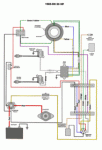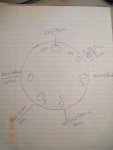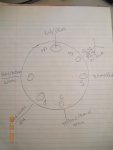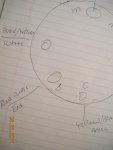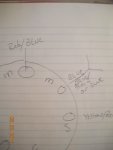I just got a 1991 Force 90 HP with prestolite ignition. Someone must have messed up the wiring. I find out a wiring diagram online but still confused and a lot questions.
1. For the key switch, B comes from battery positive. C goes to choke. I is overheat buzzer. But what is M? The two M lined together at no-turn position, but disconnected and doesn't link to any other lines when turn to I and II position. The white lines goes to CD module, which I found out to be black/yellow lines actually. These lines come from Key-M - StopSwitch - Key-M - Blue - Black - Purple - Stator? Are these lines, which connected to CD modules, the +12V or Ground in the end?
2. How is the over heat Buzzer connected, I have no idea at all.
3. For outboard timing, is it true that the starter crank timing is 28 BTDC? Mine is now checked to be around TDC. If it should be 28 BTDC, the timing will increase to 30-32 BTDC when WOT? Only 4 degree? I have a distributor mercury outboard too, which idle timing is 4-6 BTDC and 21 BTDC at WOT. These statement for Force really confuses me.
4. For WOT timing check at garage, can I manually slowly crank and get sparks, just like what we do with distributor motor?
Thanks.

1. For the key switch, B comes from battery positive. C goes to choke. I is overheat buzzer. But what is M? The two M lined together at no-turn position, but disconnected and doesn't link to any other lines when turn to I and II position. The white lines goes to CD module, which I found out to be black/yellow lines actually. These lines come from Key-M - StopSwitch - Key-M - Blue - Black - Purple - Stator? Are these lines, which connected to CD modules, the +12V or Ground in the end?
2. How is the over heat Buzzer connected, I have no idea at all.
3. For outboard timing, is it true that the starter crank timing is 28 BTDC? Mine is now checked to be around TDC. If it should be 28 BTDC, the timing will increase to 30-32 BTDC when WOT? Only 4 degree? I have a distributor mercury outboard too, which idle timing is 4-6 BTDC and 21 BTDC at WOT. These statement for Force really confuses me.
4. For WOT timing check at garage, can I manually slowly crank and get sparks, just like what we do with distributor motor?
Thanks.





















